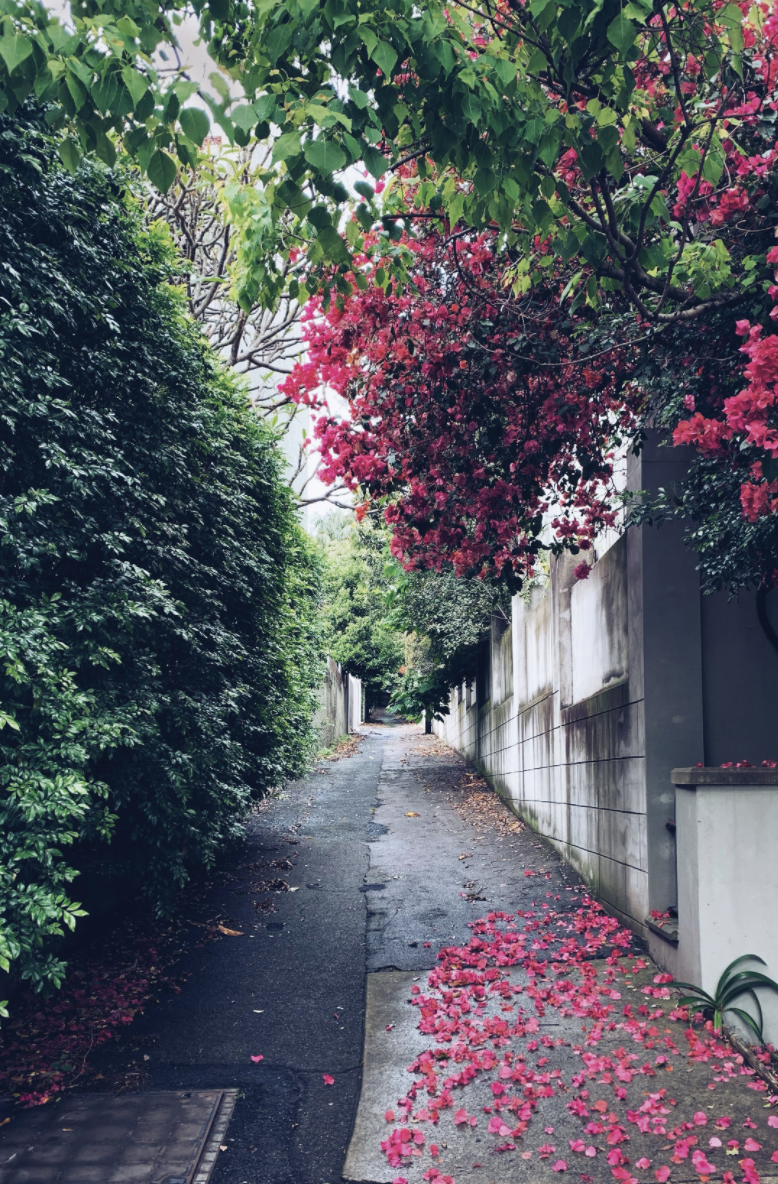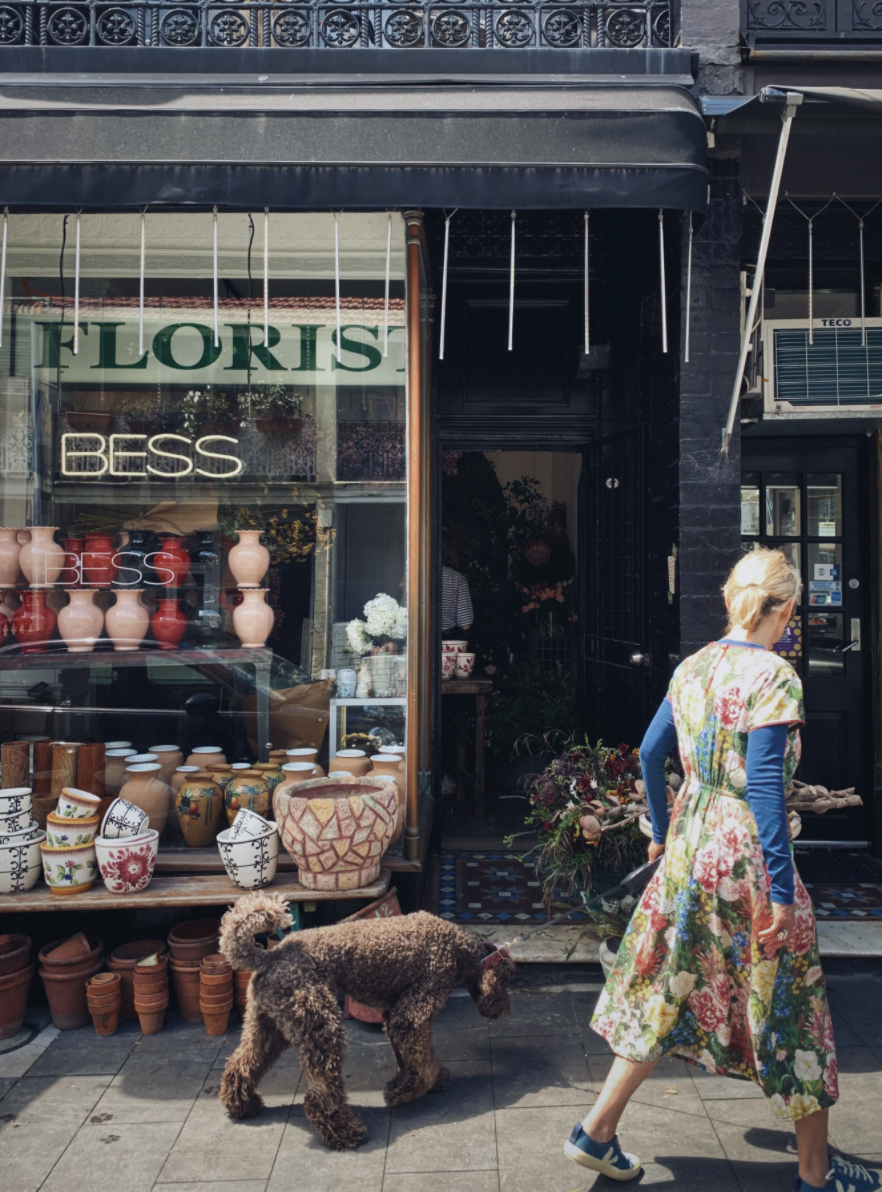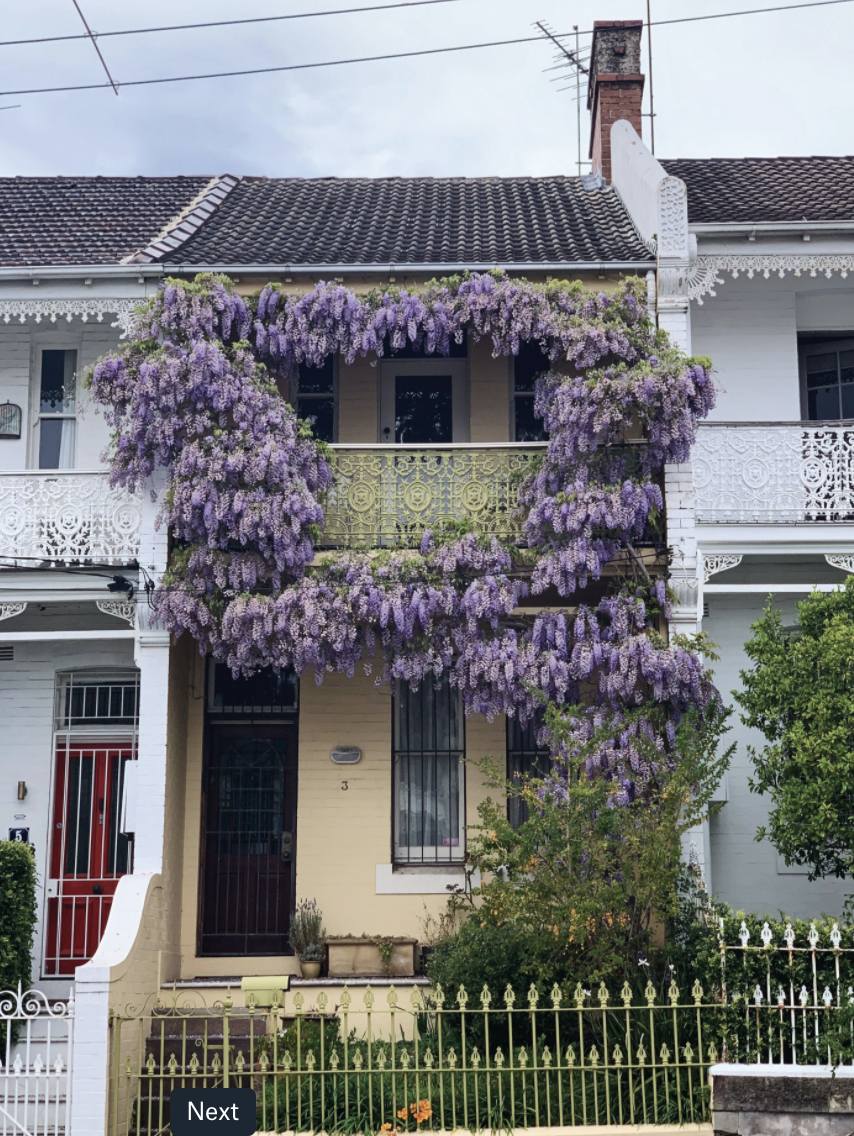Of sandstone and side streets
Photography: Pip Farquharson
Paddington-born-and-raised writer Tess Durack finds much to discover in the 2021 postcode, even after a lifetime’s exploration
As a kid, I used to career down Cascade St with my school mates from Glenmore Road Public School. The trek back up the hill after an afternoon’s sport at Trumper Park was a drag, but a cold half litre of milk from the little shop halfway up always hit the spot.
Decades later, I still find the walk up Cascade St a slog. But the heady perfume of its ivory curl trees takes the edge off, and just the other day I discovered a tiny laneway in the sandstone walls I’d never noticed before.
All these years on, Paddington is still revealing itself to me — a little alley here, a cul-de-sac there, a tiny park, an unexpected pathway.
When friends come to visit, they stop in wonder at explosions of pink bougainvillea spilling over gelati-coloured walls. “It’s like Positano!” they exclaim. Or at the cool gloom of plane-tree lined Paddington St: “It’s like London!” And at the footpath cafes and pretty boutiques of Five Ways and William St: “It’s like Paris!”
For sheer loveliness, there’s no more generous suburb.
And it has a palpable sense of history, a little mystery even. For all its heart-on-its-sleeve sun-soaked corners and cheery rows of terraces, Paddo plays its cards close to its chest.
Only for the persistent explorer are its more hidden treasures revealed — the moss-covered sandstone walls of the old quarries, a children’s park that was once a paddock where delivery horses grazed, the tumbled-down fencing of back streets where communities of artists thrived in Paddington’s bohemian heyday, and the sun-dappled depths of the old reservoir.
But it’s not all picturesque wanderings. Watch your step navigating the bulging tree roots that tear open the pavement, dodge the red and yellow bins sprawled across the footpath on collection day, keep an eye out for the twin urban dangers of nesting magpies above and steaming dog poo underfoot, beware the speeding Mercedes around a blind corner.
And it’s changed, of course. Much has been made of Oxford St’s rise and fall and gradual comeback, evolving from an ancient Aboriginal muru to a track connecting Sydney Cove with the signal station at South Head, from Victorian thoroughfare to must-visit shopping strip, from bleak shell of its former self to its present cautious return to shops and eateries.
I still remember the deli where I bought cigarettes for my grandad, the sawdust covered floors of the butcher, the café where I got my first job, and the upstairs gallery where I first laid baffled eyes on conceptual art.
It’s easy to encapsulate that time as the 'good old days'. But the streets' present intriguing mix of aquariums and Italian bars, tailors and sandwich shops, vintage stores and grocers makes me hope there are plenty of good days to come.
While Oxford St may be Paddo’s most obvious barometer of change, it’s by no means the only one.
The ethnic diversity that characterised the suburb for several decades in the mid-20th century is almost entirely gone. The formerly inexpensive homes once occupied by myriad nationalities of ‘New Australians’ are now snapped up for millions by down-sizers and young professionals.
Sometimes beautifully restored and renovated, they are too often gutted entirely in an alarming trend for façadism that Greens councillor at Woollahra Council, Matthew Robertson, sees as a threat to the fabric of Paddington’s cherished heritage environment.
The Paddington Society has been heroic in its efforts to protect that environment and face the ongoing challenge of developers ever poised to take advantage of loopholes in legislation and leniencies in the less than robust City of Sydney development control plans.
“Conserving Paddington,” says Robertson, “will only be achieved if the commitment of the community and Woollahra Council continues.”
And with the pandemic still keeping us close to home, celebrating and nurturing Paddington’s unique low-rise and Victorian human-scale design has never been more important.
Real estate agent Georgia Cleary has worked in the area for 30 years and has seen the dramatic shifts in Paddington’s character up close.
“I miss those days when you could roll down to the pub without making a booking and people would spill out on to the footpath,” she reminisces. “But a change in demographic and social regulation has really had an impact on that scene.
“In other ways, I’ve seen it come full circle,” Cleary says. “In the 90s, I saw a lot of families moving out. They wanted the bigger backyards and good schools of Sydney's north side. We weren’t content to let our kids play on the streets anymore — there was fear and anxiety.”
Now they’re moving back as Paddo properties become some of the most desirable in Sydney.
Convenience, schools and restaurants are all words that feature heavily in the real estate ads. But it’s the charm of Paddington’s streetscape that really seduces. Throw in the beloved Chauvel, the marvel that is Centennial Park, an abundance of corner stores and spring blossoms brilliant enough to take your breath away, and it’s no wonder the once humble Paddo terrace is in demand.
“And kids are playing in the street again,” says Cleary. “Community is back.”
Through it all, Paddington remains a pedestrian’s delight, a suburb made for strolling and ambling, for pausing and lingering. And, occasionally, a helter-skelter run down the roller-coaster dip of Cascade St. For old time’s sake.



